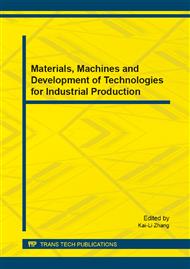p.548
p.553
p.558
p.563
p.569
p.573
p.578
p.583
p.588
Construction and Influence Analysis of Co-Author Network Based on Network Science
Abstract:
In this paper, we are devoted to the construction and analysis of research network. Firstly, on the basis of data Erdos1, a co-author network is built and two novel measures are proposed to analyze properties of the co-author network. A data extraction method using string matching technique is developed and the network is visualized using UCINET. Then, the first-order and second-order entropy are defined to depict the complexity of the network, and the node’s invalidity probability and load-bearing capacity are defined to depict the robustness of the network.
Info:
Periodical:
Pages:
569-572
Citation:
Online since:
August 2014
Authors:
Price:
Сopyright:
© 2014 Trans Tech Publications Ltd. All Rights Reserved
Share:
Citation:


